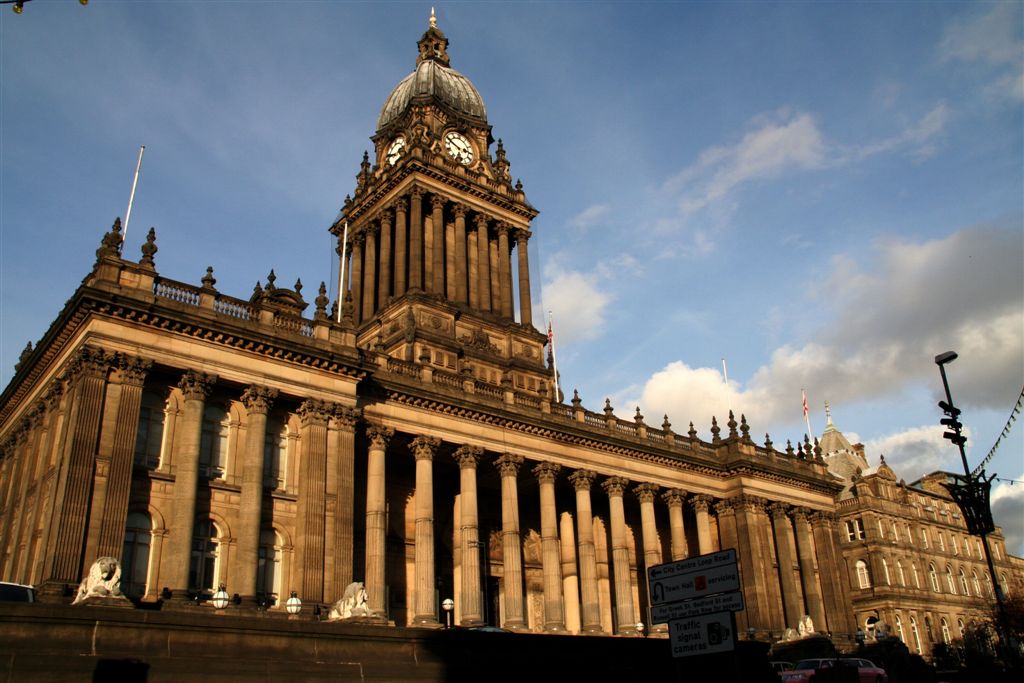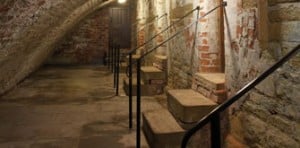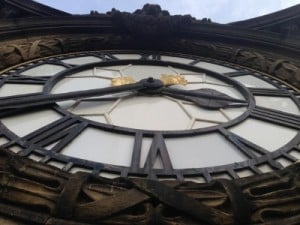Take a tour of Leeds Town Hall
February 2, 2015
 Anyone who has lived, studied or worked in Leeds can’t have missed the Town Hall. For those of you who have, it’s the imposing building on the Headrow with the giant steps and the clock. Although most of us are familiar with its exterior, not all of us are aware of what’s inside. I must have walked past a hundred times but I knew very little about its interior. I recently had the chance to go on a fantastic guided tour of the building. Tours of the Town Hall are a fascinating opportunity to explore this landmark building while discovering facts that bring the architecture to life.
Anyone who has lived, studied or worked in Leeds can’t have missed the Town Hall. For those of you who have, it’s the imposing building on the Headrow with the giant steps and the clock. Although most of us are familiar with its exterior, not all of us are aware of what’s inside. I must have walked past a hundred times but I knew very little about its interior. I recently had the chance to go on a fantastic guided tour of the building. Tours of the Town Hall are a fascinating opportunity to explore this landmark building while discovering facts that bring the architecture to life.

Image courtesy of Leeds City Council
Taking five years to build, Leeds Town Hall was designed by architect Cuthbert Brodrick.
No expense was spared: it was estimated that the building would cost £41, 000 but took £122, 000 to complete- the equivalent of £14 million today. Queen Victoria opened Leeds Town Hall on its completion on 7th September 1858, as two hundred thousand people lined the streets.
The first room you enter, the vestibule of the Town Hall, boasts a grand neoclassical scheme. It has a domed ceiling, gilt coffering, an intricate tiled floor (restored in 2001) and imposing pilasters with ram’s heads in their capitals to represent the city’s textile industry. In the vestibule stand Carrera marble statues of Victoria and Albert. The main room, the Victoria Hall, is equally majestic, despite the fact that its chandeliers were divorced from the barrel-vaulted ceiling and sold to raise money for the war effort. The Victoria Hall was originally painted by the decorators of the Royal Palaces, demonstrating the care that was lavished on the interior. In 2000 balconies were added that had been suggested on Cuthbert Brodrick’s original design.
Tours of the Town Hall also afford members of the public an eye-opening chance to see areas of the building which they wouldn’t normally have access to.
These include the courtroom; the remaining one of the four that were originally housed in the Town Hall. This has been restored with Heritage Lottery Funding to how it would have looked in the 1850s. My guide related captivating stories of real people who stood before the judge, including a suffragette, a ten-year-old boy accused of stealing a duck and the infamous Victorian burglar and murderer Charles Peace. Following in the footsteps of convicted criminals, the tour descends from the dock into the bowels of the building. Here are the Victorian cells used to keep people before their trial. It is clear to see how unpleasant these cold, dark and damp cells, located beneath the main steps of the building, would have been for those awaiting their fate. From the bottom of the courtroom stairs a passageway leads to a door which gives onto the street, where transport would have been waiting for the condemned. It is chilling to think that those given a death sentence would have walked along this passage to be taken to Armley Gaol for execution, a practice that only stopped in 1961.

Image courtesy of Helena Roddis
From these sobering depths, the tour climbs a quite literally breathtaking 203 spiral steps to the clock tower. This reveals the inner workings of the clock and the four tonne bell and a spectacular view over the City of Leeds. This vantage point also allows the viewer to appreciate the detail lavished on the masonry at this height, despite the fact that most townspeople would never see it up close.
Tours of Leeds Town Hall run on the last Monday and Saturday of each month and I can vouch for the fact that they are a surprisingly entertaining way to spend an afternoon.
Links:




Comments